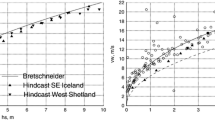Abstract
The environment onboard a ship presents a typical example of a severe environment, displaying extreme conditions of temperature and relative humidity, especially in the engine room. Datasheets, the international labour organization, and standards do not provide clear information about the suitable ambience of the engine room, its design conditions, and the role of marine engineers in preventing work-related risk. In this study, air temperature and relative humidity were monitored at several locations onboard a merchant ship. These real monitored data were then compared with the ISO design indications to obtain an effective work risk analysis. From these indoor temperature and relative humidity data, the corresponding parameters of thermal comfort in the engine control room and the heat stress and sweating index of a worker in the engine room were determined. As a function of these indices, the maximum time that a worker can stay in the engine room and the time for which he must rest in the control room were also calculated in the present study. Some design corrections are also proposed herein to improve these environments.






Similar content being viewed by others
References
International Hazard Datasheets on Occupation. Ship-Engineer (Machinist). http://www.ilo.org/public/english/protection/safework/cis/products/hdo/htm/engnr_ship.htm. Accessed April 2009
ILO (1996) Accident prevention on board ship at sea and in port. An ILO code of practice (ISBN 92-2-109450-2). ILO, Ginebra
ISO 7547 (2002) Ships and marine technology. Air-conditioning and ventilation of accommodation spaces. Design conditions and basis of calculations
ISO 8861 (1998) Shipbuilding. Engine-room ventilation in diesel-engined ships. Design requirements and basis of calculations
Parsons KC (1999) International standards for the assessment of the risk of thermal strain on clothed workers in hot environments. Ann Occup Hyg Brit Occup Hyg Soc 43(5):297–308
INNOVA Air Tech Instruments A/S (1997) Thermal comfort. Denmark. http://www.lumasense.dk/. Accessed 1 Apr 2007
Fanger PO (1970) Thermal comfort analysis and applications in environmental engineering. McGraw-Hill, USA
American Society of Heating, Refrigerating and Air-Conditioning Engineers (ASHRAE 1985) HVAC Fundamentals. ASHRAE. Atlanta
American Society of Heating, Refrigerating and Air-Conditioning Engineers ASHRAE Standard (2001) Proposed revision to an American national standard thermal environmental conditions for human occupancy. First Public Review Draft
ISO 7730 (1994) Moderate thermal environments. Determination of the PMV and PPD indexes and specification of the conditions for thermal comfort
ISO 7933 (2004) Ergonomics of the thermal environment. Analytical determination and interpretation of heat stress using calculation of the predicted heat strain
Normativa Técnica de Prevención de Riesgos. NTP 18. Heat stress evaluation of severe exposures. http://www.insht.es/portal/site/Insht/menuitem.a82abc159115c8090128ca10060961ca/?vgnextoid=db2c46a815c83110VgnVCM100000dc0ca8c0RCRD. Accessed April 2009
Normativa Técnica de Prevención de Riesgos. NTP 350. Heat stress evaluation required sweating index. http://www.insht.es/portal/site/Insht/menuitem.a82abc159115c8090128ca10060961ca/?vgnextoid=db2c46a815c83110VgnVCM100000dc0ca8c0RCRD. Accessed April 2009
ISO 7243 (1989) Hot environments. Estimation of the heat stress on working man, based on the WBGT-index (wet bulb globe temperature)
Simonson CJ et al (2001) Improving indoor climate and comfort with wooden structures. Technical Research Centre of Finland. Espoo
University of A Coruña (2008) Patent number P200801036. Department of Energy and Marine Propulsion
Wang J (2001) The current status and future aspects in formal ship safety assessment. Saf Sci 38:19–30
Wang J (2002) Offshore safety approach and formal safety assessment of ships. J Safety Res 33:81–115
Yang ZL, Wang J, Bonsall S, Fang QG (2009) Use of fuzzy evidential reasoning in maritime security assessment. Risk Anal 29(1):95–120
O’Connor PJ, O’Connor N (2006) Work-related maritime fatalities. Accid Anal Prev 38:737–741
Roberts SE, Marlow PB (2005) Traumatic work-related mortality among seafarers employed in British merchant shipping, 1976–2002. Occup Environ Med 62:172–180
Author information
Authors and Affiliations
Corresponding author
About this article
Cite this article
Orosa, J.A., Oliveira, A.C. Assessment of work-related risk criteria onboard a ship as an aid to designing its onboard environment. J Mar Sci Technol 15, 16–22 (2010). https://doi.org/10.1007/s00773-009-0067-0
Received:
Accepted:
Published:
Issue Date:
DOI: https://doi.org/10.1007/s00773-009-0067-0




